Thajiwas peak climbed after 78 years
News surfaced four days ago reporting that Indian Air Force had rescued climbers, Faisal Wani and Zeeshan Mushtaq, who were stranded on Thajiwas Glacier in Kashmir. However, the story of their historic rock-climb of Thajiwas Peak and their achievement was untold or rarely reported.
Zeeshan Mushtaq(23) and Faisal Wani(27), climbers from Kashmir approached Thajiwas Peak (4854m) via the Great Couloir route in alpine style this July.
Zeeshan made the historic second ascent of the Couloir on 2nd July 2023 after 78 years of the last successful climb by Jackson and Buzzard in 1945, and overall it was the third successful ascent of the peak. Zeeshan was accompanied by his friend Faisal Wani but stopped a hundred meters below the summit.
In an exclusive chat with Dream Wanderlust, Zeeshan says, "My main objective was to start a new chapter of alpinism in the valley. I choose the Thajiwas peak for it is clearly visible from the road-head Sonamarg. I wonder why no one in the last 78 years was successful to summit it."
But, why Thajiwas? he quoted Stephan Venables, "For a mountaineer, there is something very exciting about an unclimbed Himalayan peak", and says "It was this excitement that I choose this peak even though it was climbed before but the conditions were altogether different."
"The feeling that I felt at the summit calmed my soul. I was very much exhausted but my inner self was cheering up with joy. It opened doors to my dreams and showed me that we also have the ability to climb the technical peaks," he added while he was discussing the summit.
Thajiwas range, also known as the Alps of Kashmir is as fine a range as any other like sized glacier in Kashmir. It runs SE to NW and joins the Sindh river at Shitkari just below Sonamarg where the westward flow of the river turns South to the Vale of Kashmir. The overlooking igneous Thajiwas range is by no means a cragman's paradise.
However, on their way down Faisal had a fall and got injured. They called for rescue. Mountaineers from JIM and IAF jointly carried out the rescue operation and safely admitted them to the hospital.
The story of their expedition and the rescue operation is written below as reported by the Zeeshan Mushtaq exclusively for Dream Wanderlust.
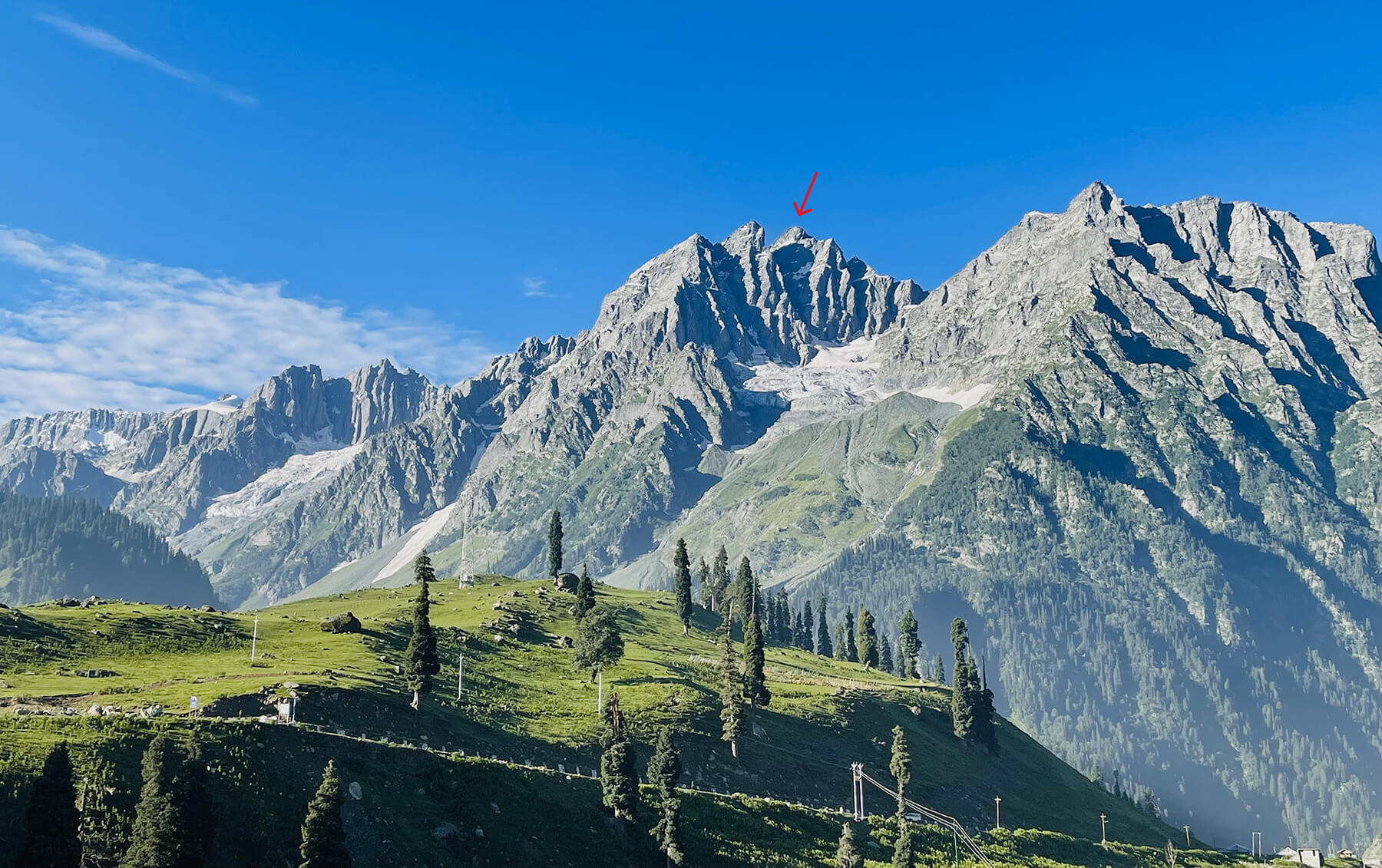
Thajiwas peak
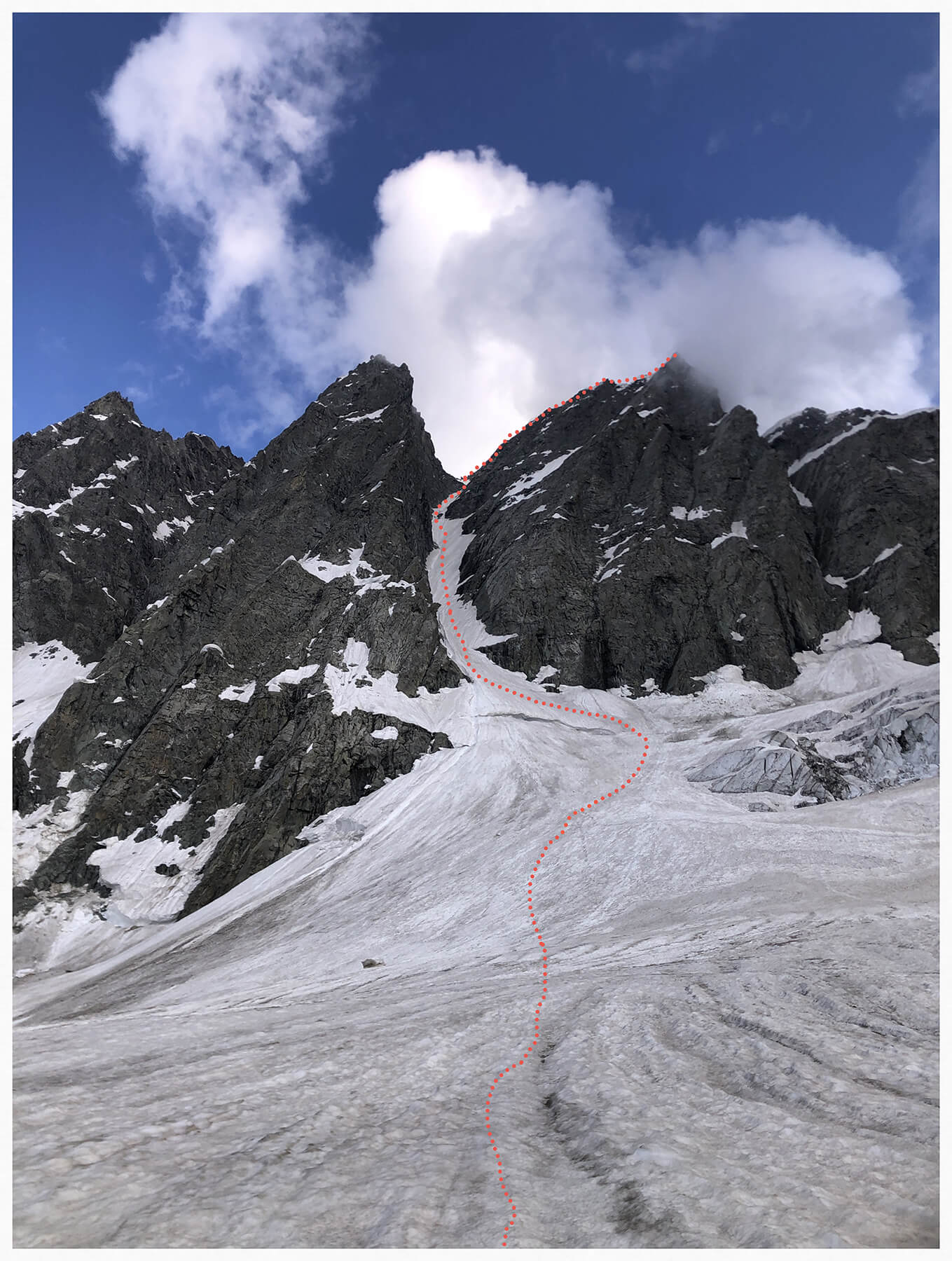
Route
A brief climbing history
In 1933, James Waller on the advice of Dr. Ernest Neve attempted to climb this 4854m Thajiwas peak with Kashmiri youth Abdullah Mir. In 1937, Waller's second attempt was successful. He chose the same couloir (a steep gully) 300m long and then scaled the rock pyramid to the summit. This route provided the necessary challenge and safety for the expedition to reach the summit.
In October 1944, Wilfred Noyce climbed solo in crampons up much of the couloir, finding an icy snow crust and ice pitches in places. In July 1945 John Jackson found deep, soft sliding snow, revealing ice, and retreated after some 250 meters.
The second ascent was made by Jackson and Buzzard in 1945 but this time the route was by Glacier 2 ( Waller's descent route in 1937). A group of local Kashmiri mountaineers attempted to scale this peak but had to retreat because of the worst snow conditions.
Finally after 78 years, on 2nd July 2023, Zeeshan Mushtaq climbed Thajiwas Peak via the Great Couloir. This was the second ascent of the Couloir and overall the third ascent of the peak. Zeeshan was accompanied by his friend Faisal Wani but stopped hundreds of meters from the summit.
Expedition note
1st July 2023
We started our trek from Sonamarg towards the base camp at 10:30 in the morning. The ascent was steep from the beginning and challenging as we did it alpine-style. We had to carry all our gear on our backs, which made the climb more difficult. We also had to be very careful to not put too much strain on our bodies. It was a slow and steady climb, but eventually, we reached base camp. We set up our camp on a leveled snowfield near the glacier snout. After establishing our camp, we set out on a recce trip to find the best route up to the Couloir. We took multiple safety precautions as we weren't sure what kind of terrain and conditions we would be dealing with on our climb. We also had to take into consideration the fact that the peak hadn't been successfully summited since 1945, and therefore there would be no established route for us to follow.
The couloir was cut from the glacier field by a huge crevasse which stopped our advance. The crevasse was too large and deep, so the only way to cross it was to detour around it. This meant we had to travel a longer distance, but it was the only way to reach the couloir.
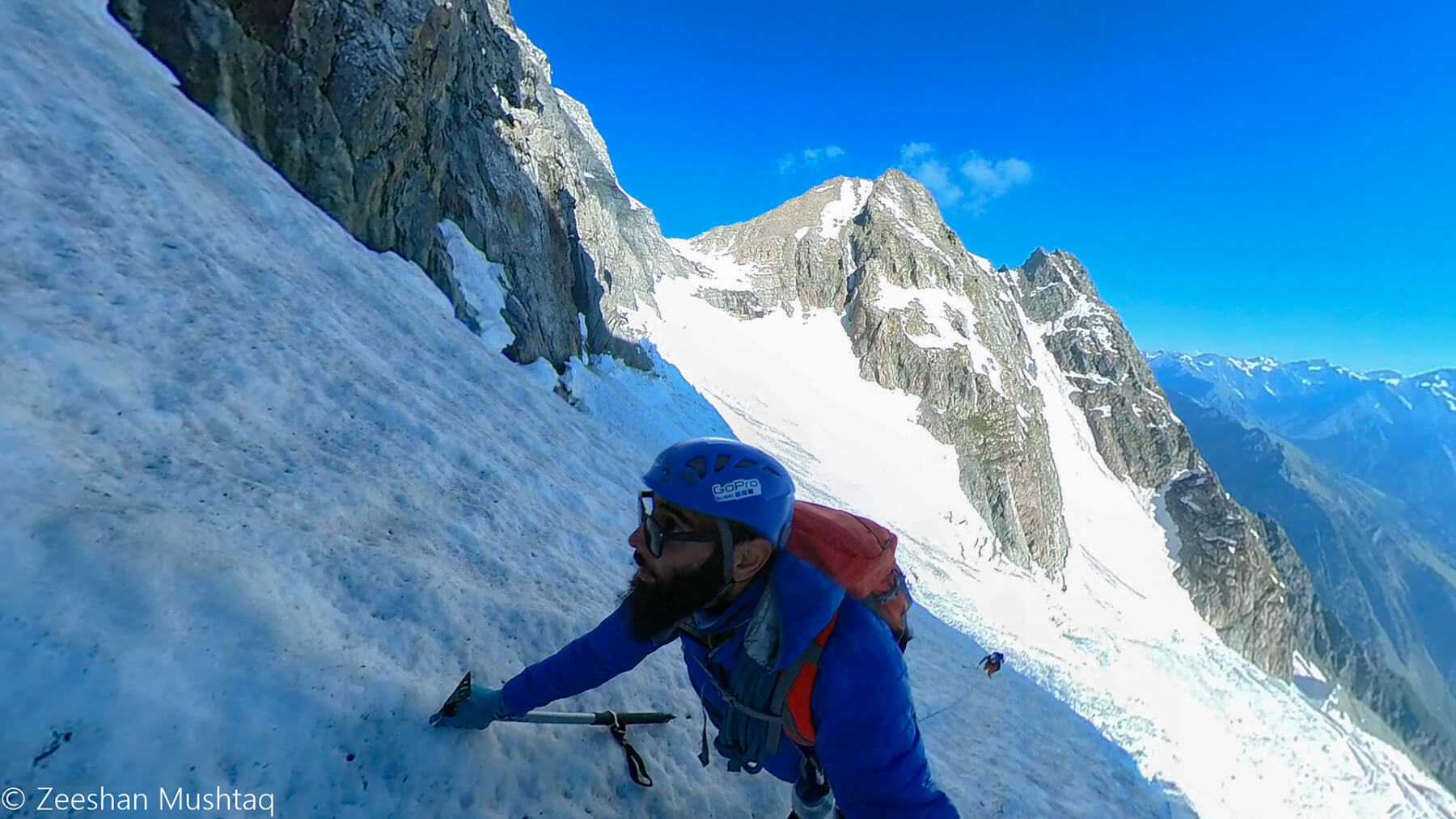
Start of the Couloir
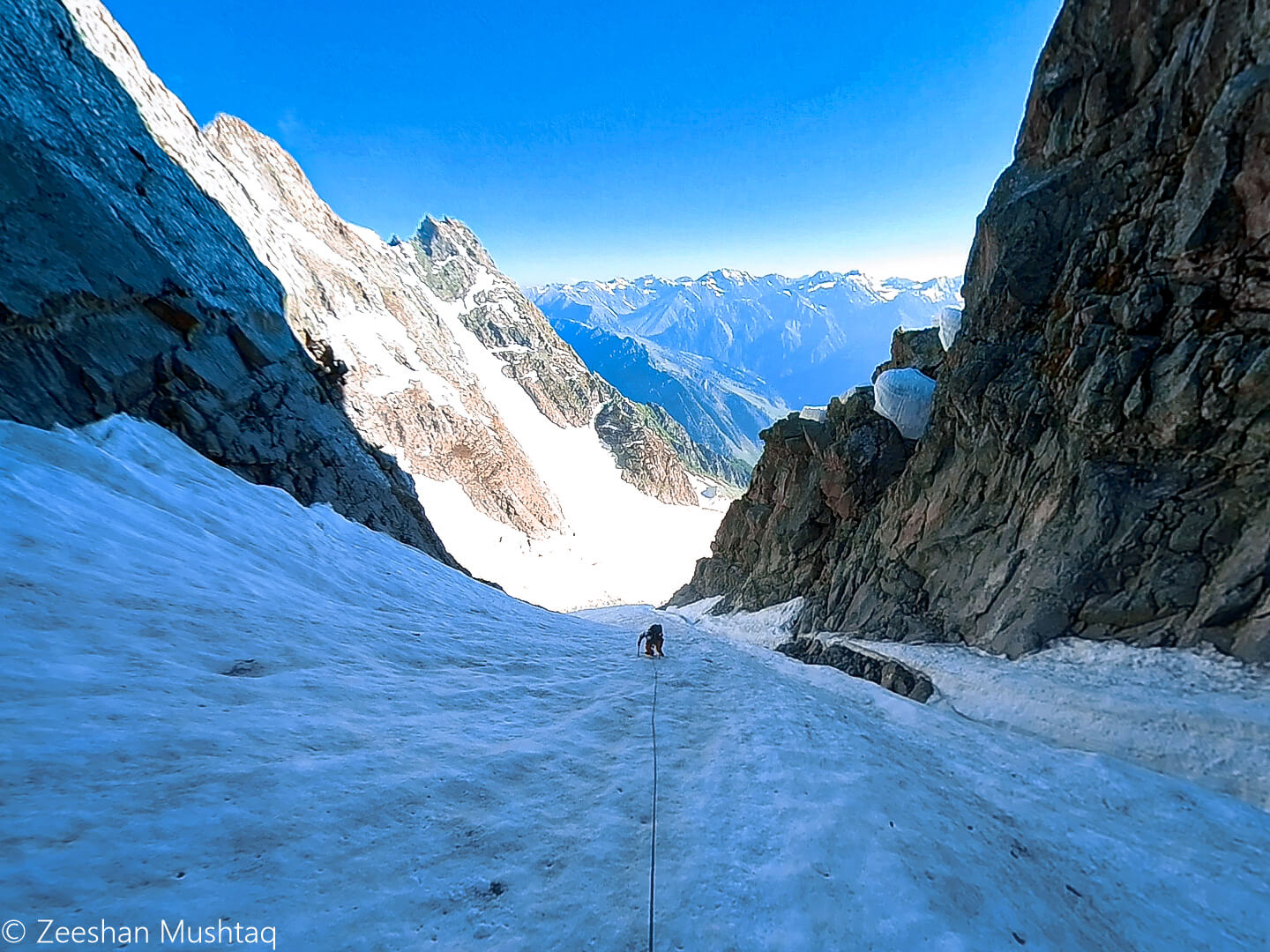
Climbing the Couloir
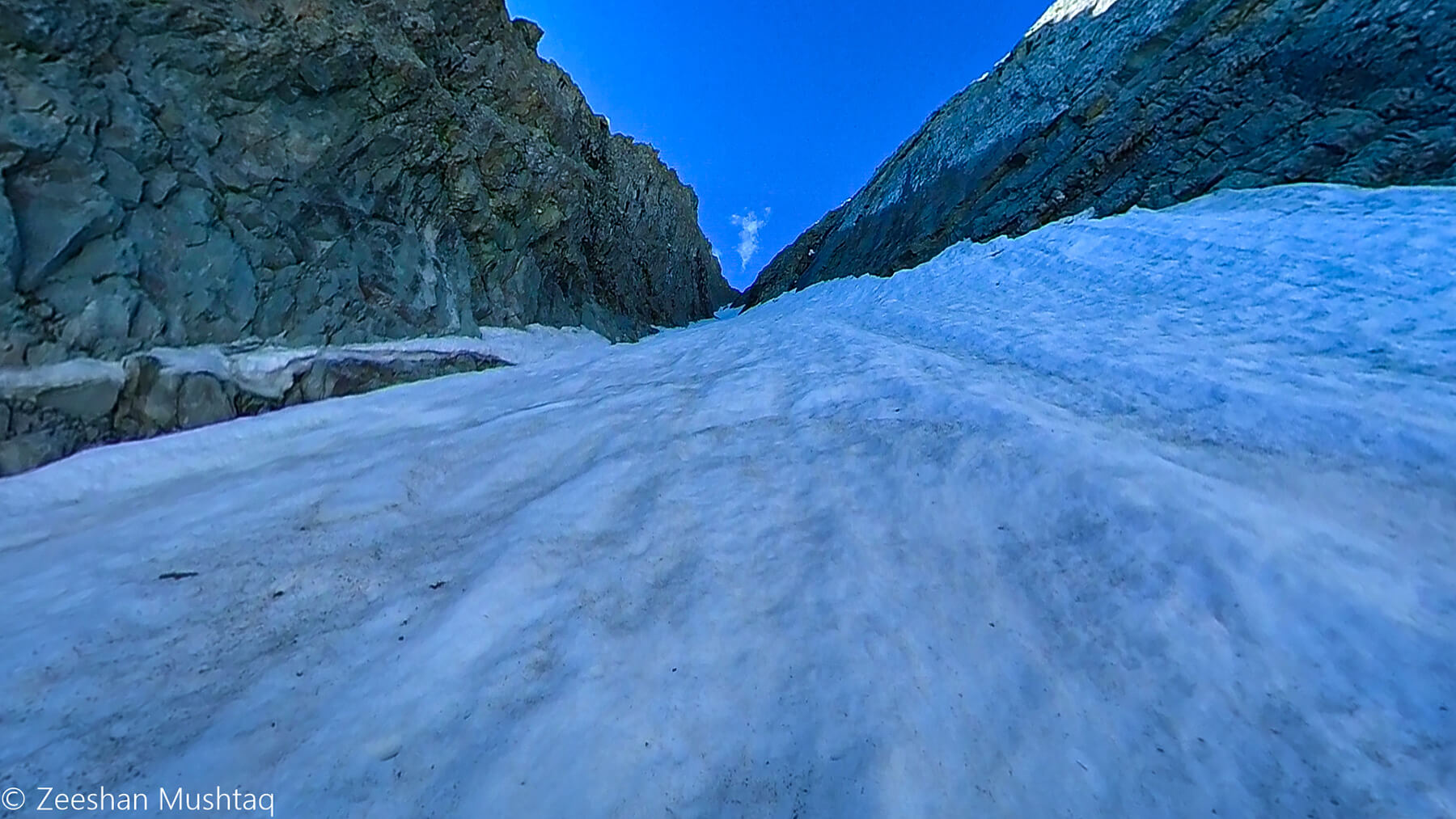
The Couloir
2nd July 2023
We started our climb at 5 in the morning and it took us an hour to reach the base of the couloir. The couloir is around 300m in height and steepens in places to 70 degrees but the snow condition is highly dependent on seasonal conditions. It is notoriously difficult to climb as the incline is very steep and the snow is often unstable due to changing weather patterns. This makes it very important to choose the right time of year to attempt a climb and to be experienced enough to navigate the terrain safely. The snow was so soft in places that it made it difficult to gain traction. The ice axe could not be used to secure the surface but it was a challenge in other places. As we rose in elevation, the views became breathtaking. The majestic Nanga Parbat could be seen from our vantage point, and the vast array of mountains provided a picturesque scene.
It had exhausted both of us to the point of exhaustion. The climb was difficult and taxing, both mentally and physically, due to the challenging terrain and the altitude. Zeeshan's partner had to stop 300m below the summit, so he had to brave the final pitches of mixed climbing alone. Despite the difficulty, Zeeshan made it to the summit at 11:30 am. He had to face a variety of obstacles on the climb, including steep rock faces, icy conditions, and thin air. He had to push himself to the limits of his physical and mental strength to reach the summit in time. At the top, the magnificent views of the majestic mountains and valleys gave him a sense of accomplishment and pride. The whole of the main Himalayan range from Nun Kun to Nanga Parbat, the Kolahoi massif, and other ranges was visible.
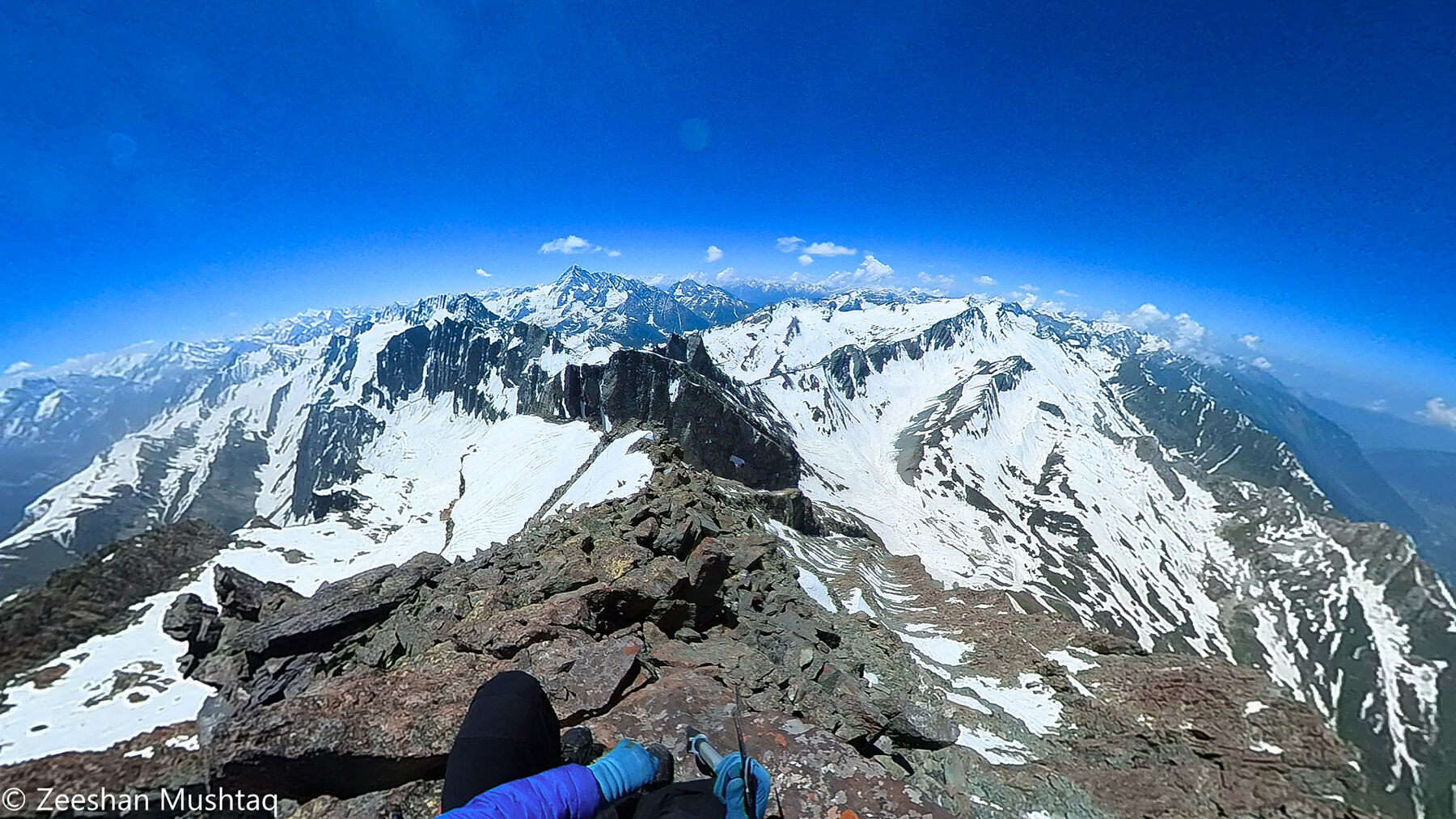
At the Summit
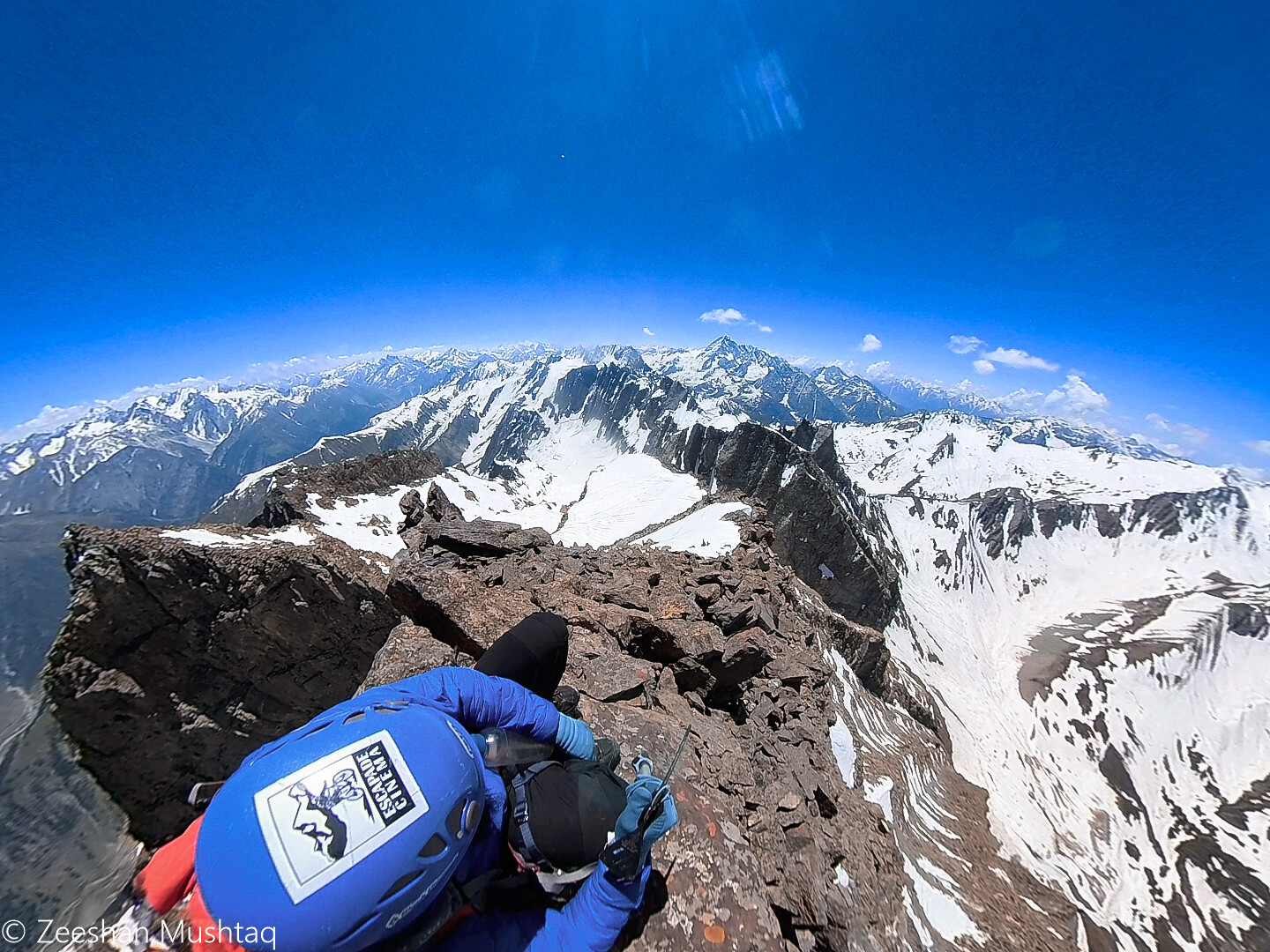
At the Summit
The descent was to be made on the same couloir. As soon as I reached out to my partner, we roped up again but the snow conditions worsened. Our plan was to descend the couloir as quickly as possible. We had to navigate around large soft snow patches. The descent was challenging and required a lot of concentration. The snow was slushy and the slippery surface caused us to lose our footing and slide uncontrollably. The descent was too fast and the impact of the fall caused my partner Faisal to sustain a leg injury, which combined with the cold weather, led to hypothermia. We had to call for rescue as my partner could not walk. The cold temperatures compounded the severity of the situation as hypothermia can happen in under an hour in such conditions. This made it difficult for us to move to safety on our own and meant that we had to call for help. Despite the severity of the situation, I had to take quick and decisive action to protect my partner from the cold. I used my own body heat, as well as clothes, to keep him warm. We stayed calm and waited for the rescue team to arrive. A team from the Jawahar Institute of Mountaineering and Winter Sports and locals from the area reached out to us after around 4 hours. My partner was taken on a stretcher to base camp. However, his condition deteriorated due to hypothermia, leading me to call for a helicopter rescue. Fortunately, the rescue team arrived in time and airlifted us to a medical facility where my partner recovered fully. I am deeply grateful for the help we received as well as the fact that both of us managed to come out unscathed.
We want to express our deepest gratitude to Mr. Haseeb Fazlul ( DC Shopian) Mr. Shyambir ( DC Ganderbal) Mr. Mahmood Ah Shah ( Director Handicrafts) Mr. Ilyas Nasir ( CEO Sonamarg Dev Authority), Tahir, Junaid, Ubaid, and Danish for the coordination on the ground. Without their help and support, it would have been extremely difficult to organize and execute the rescue mission. We are thankful for their unwavering dedication and commitment to the cause.
Special thanks to the rescue team
- Mr. Fayaz Ahmad Sheikh
- Mr. Mohammad Iqbal Everester (JIM&WS)
- Mr. Ajay Chauhan (JIM&WS)
- Mr. Nirmal Purja (JIM&WS)
- Mr. Muzaffar (JIM&WS)
- Mr. Nazir Ahmad Raina
- Mr. Mushtaq Ahmad Naik
- Indian Air Force
- Zeeshan Mushtaq
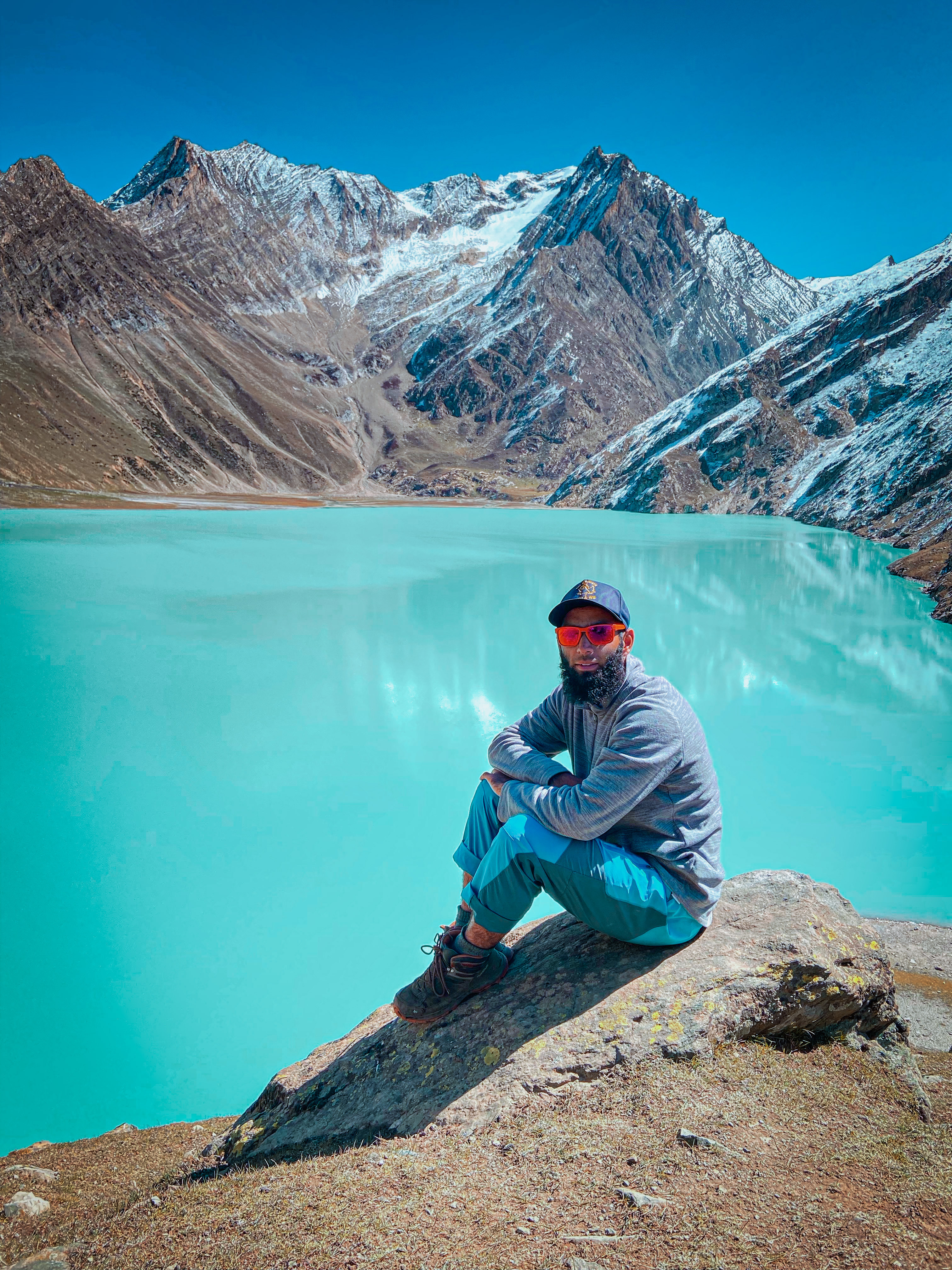
Zeeshan Mushtaq






